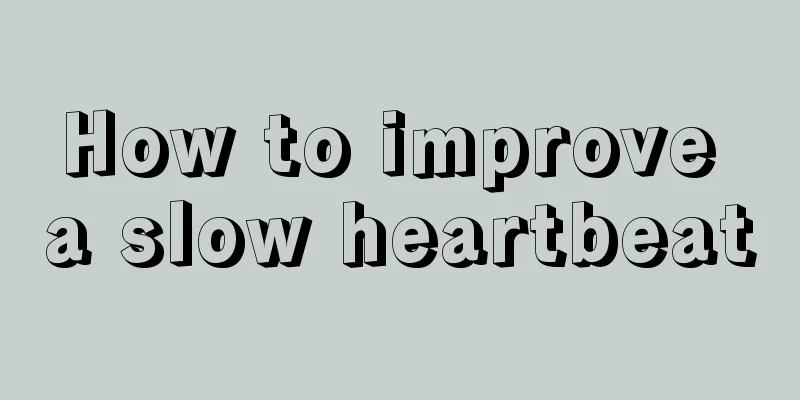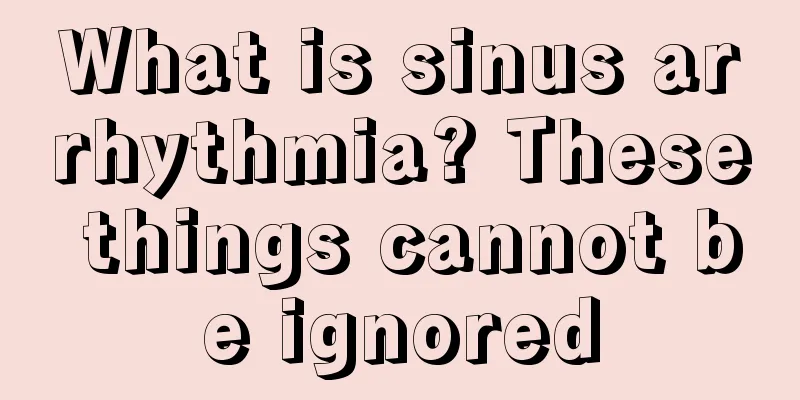How to improve a slow heartbeat

|
People's heart rate is fixed, and it is normal for it to fluctuate within a certain range. But some people's heart rate is always slow. What are the reasons for this? We know that some athletes' heart rates will decrease through long-term exercise, which is normal. If a normal person still has a slow heart rate without any physical exercise, it requires attention. So, what are the causes of a slow heartbeat? 1. First, you should check your heart rate and pulse rhythm. If it is too slow or irregular, you should seek medical treatment. A slow heartbeat is often accompanied by fatigue and shortness of breath. You should stop strenuous exercise immediately. You can soak and take ginseng tablets or salvia tablets. If the symptoms of dizziness and fatigue are severe and do not improve, you should seek medical treatment. Generally, as long as you don't feel unwell or weak, you don't need to take drugs to increase your heart rate. However, you should always have drugs that can increase your heart rate, such as atropine sulfate, isoproterenol hydrochloride, ephedrine, long-acting nifedipine, etc. These can be used appropriately if the heart rate is found to be too low. Avoid taking drugs that can slow down your heart rate, such as metoprolol tartrate and propranolol, to avoid accidents. If syncope occurs repeatedly and is not effectively controlled by medication, consideration should be given to implanting a permanent artificial pacemaker. Patients with slow heartbeat should eat more foods rich in protein , vitamins and easily digestible foods, such as beef, fish, shrimp, chicken, turtle, milk, etc.; eat more vegetables and fruits such as green vegetables, spinach, watermelon, tomatoes, grapes, lemon, pears, apples, etc. Eat less spicy and irritating foods, such as onions, ginger, garlic, pepper, pickles, etc. In addition, you should participate in sports in moderation and do what you can according to your own situation. You can do some exercises such as cardiotonic exercises, Tai Chi, and cycling. Symptoms of bradycardia Electrocardiogram examination: An adult's sinus rhythm frequency lower than 60 beats/minute is called sinus bradycardia. Sinus bradycardia is often accompanied by sinus arrhythmia (i.e. the difference between different PP intervals is greater than 0.12s). ECG characteristics The ECG characteristics of sinus bradycardia are as follows: 1. The P wave is the "sinus P wave" emitted by the sinoatrial node. The P waves appear in sequence. The P wave is upright in leads I, II, Avf, and V3-V5, and inverted in lead Avr. 2. The frequency of P waves is less than 60 times/minute, generally between 40 and 60 times/minute. 3. The PR interval is greater than 0.12 seconds. In sinus bradycardia, the T wave amplitude is often low, the QT interval is longer than usual, and the U wave is sometimes prominent. 4. The electrocardiographic characteristics of sinus bradycardia are also often accompanied by sinus arrhythmia. |
<<: Precautions for oxygen delivery
>>: Things to note 6 hours after lumbar puncture
Recommend
Can I do an ultrasound at 4 weeks of pregnancy?
When a woman is 4 weeks pregnant, which is the fi...
How to prevent rectal cancer
Rectal cancer is a common anorectal disease. It i...
Summer dampness cold and summer heat cold
Everyone may have discovered that the probability...
How much does it cost to treat breast cancer
How much does it cost to treat breast cancer? 1. ...
What are the examination items for testicular cancer
Testicular cancer is a serious male disease that ...
The main causes of osteosarcoma in adults
Osteosarcoma is difficult to cure and is prone to...
The efficacy and function of lilac flowers
Lilac not only has high ornamental value, but is ...
How to dip mugwort leaves in hot wine?
In the southern region of my country, mugwort is ...
What are the symptoms of otitis media?
Otitis media is a very common ear disease, and co...
What are the dangers of long-term manicure
For female friends, their nails are also a place ...
What medicine is effective for foot blisters
If you find a bunch of blisters on your feet, do ...
How long can you live if gallbladder cancer spreads to the liver
If gallbladder cancer spreads to the liver and is...
What are the symptoms of adrenal gland inflammation? What to pay attention to
The pancreas is a very important organ in the hum...
Can nasal endoscopy detect nasopharyngeal cancer?
With the continuous development of science and te...
How to quickly recover from a broken hand?
When winter comes, the skin around people's h...









